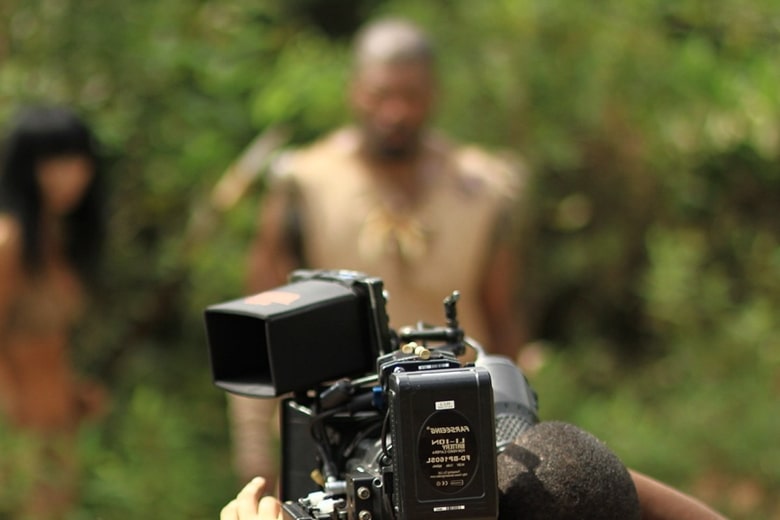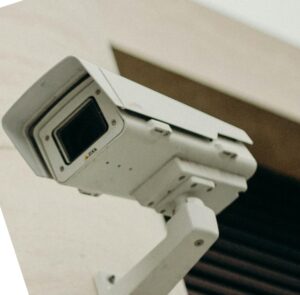When it comes to filmmaking, the magic isn’t always in the size of your budget, but in how you choose to utilize it.
 Creating a movie that resonates with audiences and looks far more expensive than it costs to produce is a testament to creativity, resourcefulness, and strategic planning.
Creating a movie that resonates with audiences and looks far more expensive than it costs to produce is a testament to creativity, resourcefulness, and strategic planning.
In the following you’ll find some actionable strategies that will increase the production value of your low-budget movie, and make it appear as if you had an A-list budget at your disposal.
Maximizing Your Budget With Smart Choices
First, Develop the Right Script
The foundation of any movie is its script so try to opt for a story that can be compellingly told within the constraints of your budget.
Character-driven dramas or confined thrillers, for example, can be more budget-friendly due to limited locations and a smaller cast, yet still deliver powerful emotional impacts.
- Complexity in Simplicity: Develop scripts that offer deep emotional or intellectual engagement without requiring extensive locations or massive special effects.
- Character Depth: Well-developed characters can be more engaging than costly visual effects.
- Location Efficiency: Stories that naturally limit the number of locations can drastically cut costs.
- Flexible Settings: Develop scripts that are not overly specific about locations, allowing you to use what is readily available and inexpensive.
Learning to write a low budget movie script can go a long way in saving your budget but still make your movie stand out as a top hit.
Know and Study Your Audience
Understanding your audience is a the first step in ensuring the success of a low-budget movie. By identifying and analyzing your target demographic, you can tailor your film to meet their preferences, thereby enhancing its appeal and potential for success without breaking the bank during the production process.
Identifying Your Target Audience
Knowing who your film is for will guide many of your creative decisions. Consider factors like age, gender, interests, and movie-watching habits to pinpoint who is most likely to appreciate your work.
- Demographic Research: Use surveys, social media analytics, and market research to gather information about your potential audience.
- Genre Preferences: Different audiences gravitate towards specific film genres and production styles. Align your film’s theme and tone with the preferences of your target demographic.
- Cultural Trends: Stay informed about current trends and topics of interest to your audience to make your film more relevant and engaging.
- Competitor Analysis: Look at similar films and their audiences to understand what works and what doesn’t in your niche.
Your film should resonate with your target audience’s preferences and expectations. This alignment increases the likelihood of a positive reception and word-of-mouth promotion.
Leveraging Pre-production Planning
Pre-production planning is your initial blueprint for a cost-effective shoot. Detailed planning can and will help you avoid costly mistakes and ensure a smooth filming process.
- Storyboarding: Visualizing scenes well before production can reduce shooting time and clarify your vision of the movie.
- Location Scouting: Find versatile locations that can serve multiple purposes within your story.
- Scheduling Efficiency: Organize your shoots in such a way so as to maximize location and actor availability – minimizing downtime.
- Budget Allocation: Prioritize your spending on elements that will have the most significant impact on screen.
Emphasizing Quality in Key Areas
While it’s essential to keep costs low, investing wisely in certain areas can elevate the overall production quality of your movie.
- Cinematography: Hire a skilled cinematographer who can do more with less. Creative lighting and camera work can add a very high-quality look to your final production.
- Sound Quality: Never compromise on sound. Clear, well-designed sound can elevate the perceived quality of your film.
- Post-Production: Allocate much of your resources to professional editing, color grading, and sound mixing to polish the end result of your film.
Harnessing Technology and Innovation
Advancements in Camera Technology
Camera technology has rapidly evolved, making it possible to achieve cinematic quality without the costs of a cinematic price tag.
- Choosing the Right Camera: Use cameras that offer high-quality visuals without the high costs. Many DSLRs and mirrorless cameras are capable of shooting in 4K.
- Rental Over Ownership: Consider renting higher-end equipment for specific shooting days rather than purchasing them.
- Innovative Techniques: Experiment with camera movements and angles to create dynamic scenes that look more expensive.
The Power of Drone Footage
 In recent times, drones have revolutionized the way filmmakers can capture footage, offering expansive aerial shots that increase the perceived value of a film.
In recent times, drones have revolutionized the way filmmakers can capture footage, offering expansive aerial shots that increase the perceived value of a film.
- Elevated Perspectives: Utilize drones for establishing shots that give your film a grand scale.
- Cost-Effective Aerials: Drone photography can provide stunning aerial shots at a fraction of the cost of traditional methods.
- Versatility: Drones can be used in various ways, from dynamic action scenes to breathtaking landscape views.
- Safety and Accessibility: Drone operators can navigate difficult locations and terrain safely, providing unique angles that enhance your film’s visual appeal.
Incorporating drone photography services into your production will significantly increase the visual caliber of your film and be a cost-effective solution to achieving cinematic quality.
By harnessing these aerial capabilities, filmmakers unlock a realm of creative possibilities previously bound by logistical and financial constraints.
Making Post-Production Count
The Art of Editing
Editing is where your movie comes together, and it’s crucial to allocate enough time and resources to this phase. You should spend most of your budget in this phase because it’s much more easier to make your film look as professional as possible simply because the nature of the editing process is meant to increase perceived value.
- Pacing and Rhythm: A well-edited film can keep the audience engaged and mask any production flaws or limitations.
- Creative Solutions: Use editing to solve narrative and pacing issues without the need for additional shooting ressources.
- Enhancements: Incorporate visual effects sparingly to enhance, but not distract your audience.
Color Grading for Mood and Atmosphere
Color grading is not just about correcting footage – it’s a powerful tool to enhance the visual storytelling of your film.
- Style and Tone: Use color grading to set the mood and emphasize the genre of your movie.
- Visual Cohesion: Ensure that your film has a consistent look that matches your vision.
- Emotional Impact: Colors can significantly affect how audiences feel about a scene or character to choose them wisely.
Empower Your Filmmaking Journey
Embarking on a low-budget filmmaking venture doesn’t mean you have to compromise on quality. By focusing on a strong narrative, making smart budgeting decisions, leveraging new technology, and emphasizing the value of post-production, you’ll be able to create a movie that looks and feels far more expensive than its cost.
And remember, the most compelling stories often come from overcoming limitations – not from the extravagance or high spending of resources. If you apply these simple strategies, you’ll see your cinematic vision comes to life in ways that captivate your audience and make your film a memorable one.






Comments are closed.